El karate-do es un arte marcial que se ha popularizado en los últimos tiempos. Yo les voy a contar una pequeña historia antes de entrar en el tema.
¡Mi historia con El karate-Do!
Les voy a tratar de describir con mis palabras o mejor dicho con las palabras de ese gran maestro, que dios lo tenga en su santa gloria oss maestro ANTONIO GAMEZ él siempre nos decía que tenía dos versiones una corta y una larga jejeje.
La corta era muy peculiar por su forma de relatar ¡sí! efectivamente era muy corta. El karate viene de la india va a la china de la china a Okinawa de Okinawa a Japón y de Japón al resto del mundo.
Y la larga la definía tan entretenida y tan emocionante que uno se podía quedar horas escuchándolo.
Karate-do is a martial art that has become popular in recent times. I am going to tell you a little story before going into the topic.
My story with Karate-Do!
I am going to try to describe them with my words or rather with the words of that great teacher, may God have him in his holy glory oss teacher ANTONIO GAMEZ he always told us that he had two versions, one short and one long hehehe.
The short was very peculiar because of its way of telling, yes! It was actually very short. Karate comes from India goes to China from China to Okinawa from Okinawa to Japan and from Japan to the rest of the world.
And the long one defined it so entertaining and so exciting that one could stay hours listening to it.
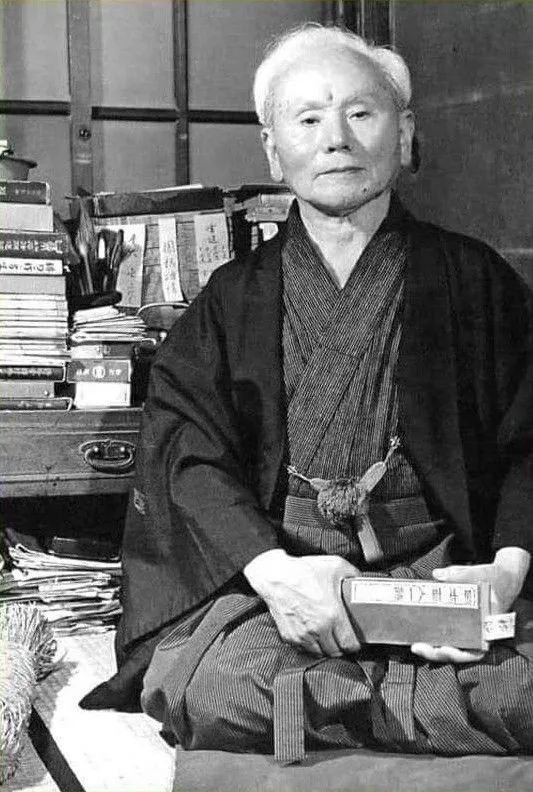
FUENTE
Su Historia Larga
El karate a ciencia cierta no tiene una fecha pero se dice que viene de los años 3.000 antes de cristo en la india y fue migrando hacia la china. A partir del siglo 15 de nuestra era el rey shoshin centraliza el poder en shuri (Okinawa) y prohíbe el uso de armas a la gente del pueblo.
En medio de la controversia de la prohibición de armas evoluciono y el mismo pueblo origino el arte marcial llamado KARATE (manos vacía) como mecanismo de defensa contra los soldados mejor conocidos como los samurái.
A finales del siglo 17 desde la isla RyuKyu (Okinawa) comienza la expansión por la misma consecuencia de los acontecimientos de la prohibición de las armas los demás pueblos fronterizo fueron adoptando esta defensa ya cuando llega a Japón por los intercambio culturales fue renombrado como Karate-do (el camino de las manos vacía) esto lo podemos definir como el camino que tenemos que recorrer para defendernos con las manos vacía ósea defendernos sin armas.
>>>Mi maestro siempre nos decía que, este arte marcial fue creado con tanta humildad y carácter porque nunca se utilizó para atacar en primer lugar, si no para defenderse, y bueno si tocaba atacar ya era en última instancia pero no en un comienzo era ataque; por cierto como evidencia, es que el karate tiene una práctica llamada kata que más adelante les contare que significa, este método es como un cómbate imaginario y siempre comienza es con una defensa y no un ataque.
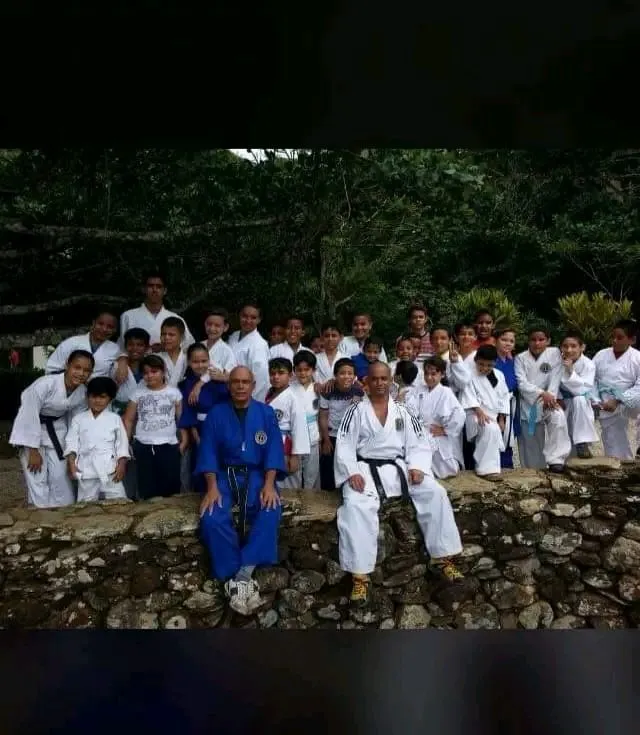
Mi maestro Antonio Gamez y mi persona recuerdos de entrenamoento en la montaña
Her Long Story
Karate does not have a date for sure but it is said that it comes from the years 3,000 before Christ in India and was migrating to China. Starting in the 15th century AD, King Shoshin centralized power in Shuri (Okinawa) and prohibited the use of weapons by the townspeople.
In the midst of the controversy of the prohibition of weapons, the martial art called KARATE (empty hands) evolved and the same people originated as a defense mechanism against the soldiers better known as the samurai
At the end of the 17th century from the RyuKyu island (Okinawa) expansion began due to the same consequence of the events of the prohibition of weapons, the other border towns were adopting this defense already When it came to Japan for cultural exchanges, it was renamed Karate-do (the path of empty hands). We can define this as the path we have to take to defend ourselves with empty hands, that is, to defend ourselves without weapons.
>>>My teacher always told us that this martial art was created with such humility and character because it was never used to attack in the first place, but to defend oneself, and well, if it was time to attack, it was as a last resort, but not initially. it was attack; By the way, as evidence, karate has a practice called kata that I will tell you what it means later, this method is like an imaginary combat and it always begins with a defense and not an attack.
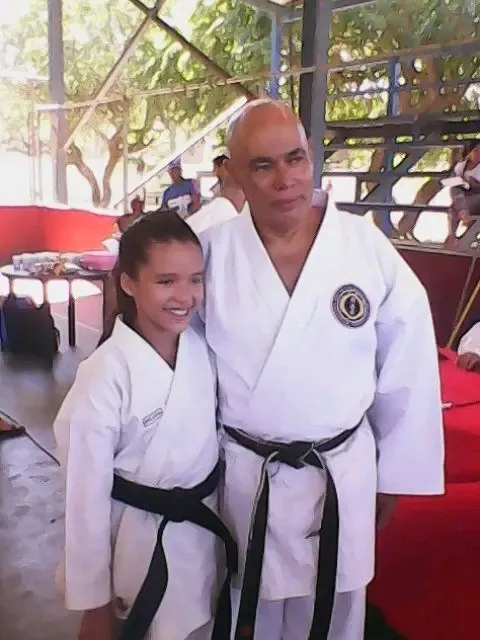
El maestro Antonio Gamez y Luisana Guillen mi hija
Entonces prosigo, en los años de 1800 por lo delicado que era la prohibición de armas y la forma de defenderse siempre se mantenía en secreto este tipo de práctica hasta comienzo del año de 1900 que fue cuando los maestros de Okinawa vieron que eran otros tiempos decidieron a dar a conocer y romper el silencio.
El sensei Anko Itosu fue quien obtuvo el permiso para poner fin el secreto de aquellos que querían aprender este arte ya después fue tan popular que lo llevo a las escuelas de Okinawa.
En 1922 el alumno más destacado de Itosu, (Gichin Funakoshi) quien ahora es llamado como el padre del karate-do que por su carácter y disciplina lo llamaban el tigre Funakoshi.
>>> Este gran maestro fue quien llevo el karate-do a Japón y tuvo que hacer modificaciones para que fuera accesible a los japoneses inclusive el cambio de nombre y el karate tal como lo conocemos en la actualidad, este gran maestro aporto para que el karate fuera conocido en el resto del mundo mandando a sus mejores alumnos al resto del mundo para que aprendieran este arte marcial. Tanto fue su aporte al karate que hay un estilo de karate llamado shotokan que significa la casa del tigre.
**Por ahora les dejare la historia hasta esta parte, coméntenme si desean saber un punto en específico, y con gusto les responderé todas sus inquietudes en mi próximo capítulo le dejare un poco más de información de este maravilloso arte llamado karate-do y del maestro Gichin Funakoshi.**
So I continue, in the 1800s because of the sensitivity of the prohibition of weapons and the way to defend oneself, this type of practice was always kept secret until the beginning of the year of 1900, which was when the Okinawan teachers saw that these were other times, they decided to make it known and break the silence.
Sensei Anko Itosu was the one who obtained the permission to put an end to the secrecy of those who wanted to learn this art and later it was so popular that he took it to the schools of Okinawa.
In 1922 Itosu's most outstanding student, (Gichin Funakoshi) who is now called the father of karate-do who, due to his character and discipline, was called the Funakoshi tiger.< /div>
>>> This great teacher was the one who brought karate-do to Japan and had to make modifications to make it accessible to the Japanese including the name change and karate as we know it today, this great teacher contributed so that the karate was known in the rest of the world by sending his best students to the rest of the world to learn this martial art. His contribution to karate was so great that there is a style of karate called shotokan, which means the house of the tiger.
**For now I will leave the story until this part, tell me if you want to know a specific point, and I will gladly answer all your questions in my next chapter I will leave you a little more information about this wonderful art called karate-do and the teacher Gichin Funakoshi.**
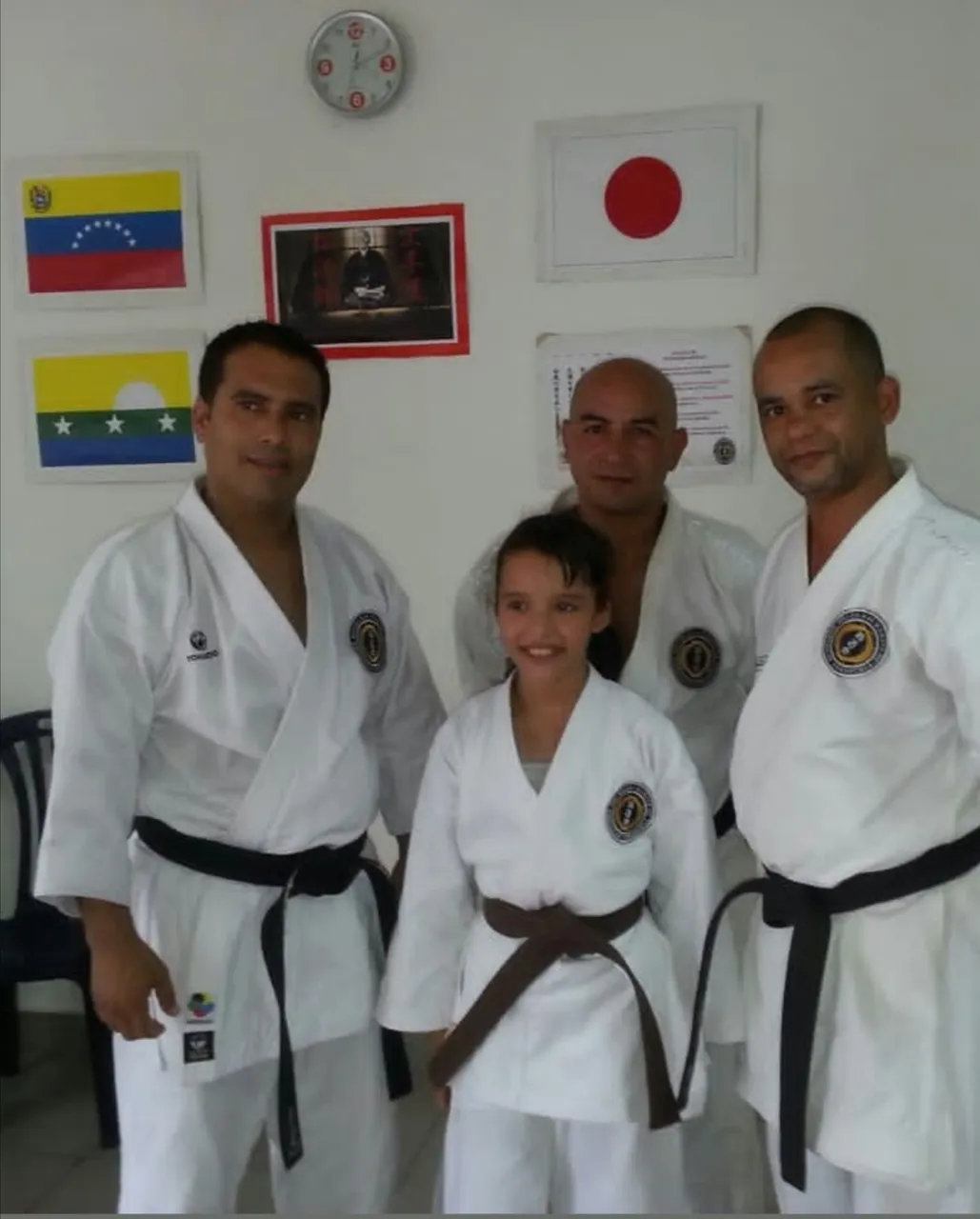
maestro Luis Velasque, Luisana Guillen y mi persona luis Guillen
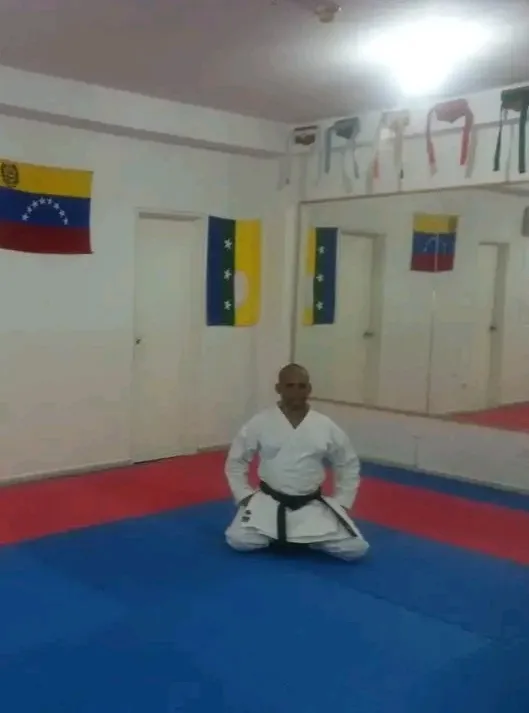
fotos tomadas con mi telf




